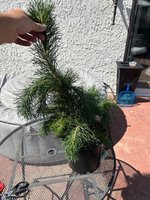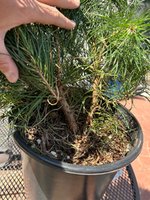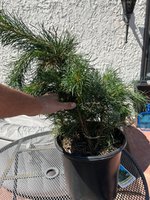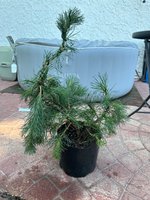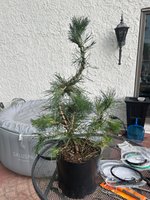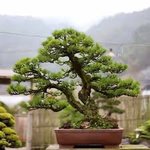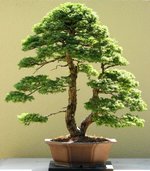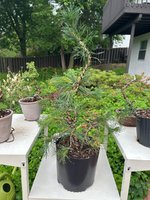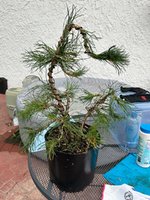View attachment 557873
I think you want to consider what you are trying to accomplish -
1 : are you wiring to create an interesting looking design RIGHT NOW
2. are you wiring as a step to get to a design?
For 1, there are a set up aesthetic rules that if you follow, you get the proportions correct and your tree will look "like a bonsai". cur the needles on bottom, form pads, keep bottom 2/3 branches off etc etc. this is actually really good practice. Learn the styles and practice with low cost material to learn the common patterns that are used.
for 2 - wire can be used to set motion, encourage back budding, maximize sunlight - but nothing is done to maximize how the tree looks "now". most trees in the phase are weird looking. they will be weird looking for 10 years. Is this what your goal is (the development of bonsai). If so cut back to build taper, and grow for many years.
It's often said, but I would also suggest, when your ready, buy trunks already grown out!
(also practice not wiring needles

)
the referenced image is an example, many young trees can look like this. practice this skill and you can turn many material into bonsai

